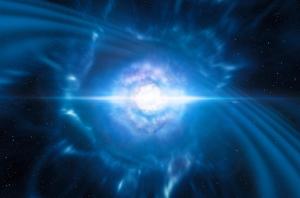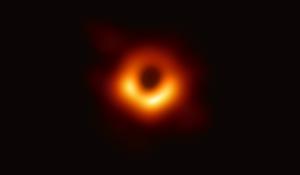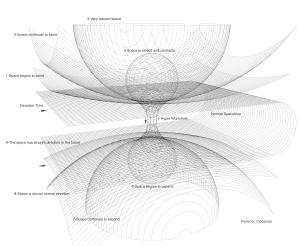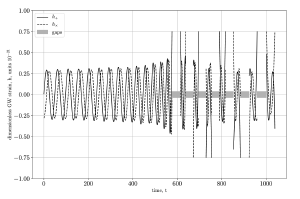Blog
Cough It Up
21 July 2020
 ESO/L. Calçada/M. Kornmesser
ESO/L. Calçada/M. KornmesserGravitational wave astronomy has changed the way we view the cosmos. In only a few years we have observed the collisions of black holes and neutron stars, confirming our theoretical understanding of these strange objects. But as gravitational wave astronomy matures, it will allow us to probe the very nature of space and time itself. While that day is a long way off, it hasn’t stopped the theory folks from dreaming up new discoveries. For example, how it might look if a black hole and a wormhole interact.1
 EHT Collaboration
EHT CollaborationBlack holes occur when a large mass collapses under its own weight. Stellar-mass black holes can form when a large star reaches the end of its life, but supermassive black holes can form in the centers of galaxies. It is this latter form that astronomers have most studied. While we know black holes exist, they have some rather strange properties. Their mass is collapsed to a point so dense that the laws of physics break down, and they are surrounded by an event horizon that traps anything that dares venture too close to a black hole. These oddities challenge understanding.
 Federico Ciccarese
Federico CiccareseWormholes, on the other hand, are entirely hypothetical. In theory, they are similar to black holes, but rather than a simple hole in space, wormholes would connect one region of space to another. Perhaps they could even connect different universes. They have long been studied by theoretical physicists as a way to test the limits of general relativity. For example, Einstein showed that while general relativity allows for the possibility of wormholes, they would collapse so quickly they could never be traversed. Kip Thorne and others have shown that if wormholes could be made traverseable, they could be used for everything from interstellar journeys to time travel.
 James B. Dent, et al
James B. Dent, et alBut if wormholes do exist, how would we know? A new paper shows how they might be identified with gravitational waves. In this work, the authors began with a theoretical wormhole between two universes. By itself, the wormhole wouldn’t emit any gravitational waves. They then simulated a black hole traveling through the wormhole, spiraling in on one side, and spiraling out and away on the other. They found that when a black hole spirals into a wormhole, it creates gravitational waves that look like two black holes merging. However, when the black hole exits on the other side, it creates a unique “anti-chirp” signal that is very distinct from a merger signal. In other words, if a black hole were to exit a wormhole into our universe, we could easily identify it through the gravitational waves it emits.
While this is an interesting study, it doesn’t prove that wormholes exist. They are still purely hypothetical. But studies like this show how gravitational wave astronomy can help us explore ideas that were once impossible to prove.
James B. Dent, et al. “The Sound of Clearing the Throat: Gravitational Waves from a Black Hole Orbiting in a Wormhole Geometry.” arXiv preprint arXiv:2007.09135 (2020). ↩︎